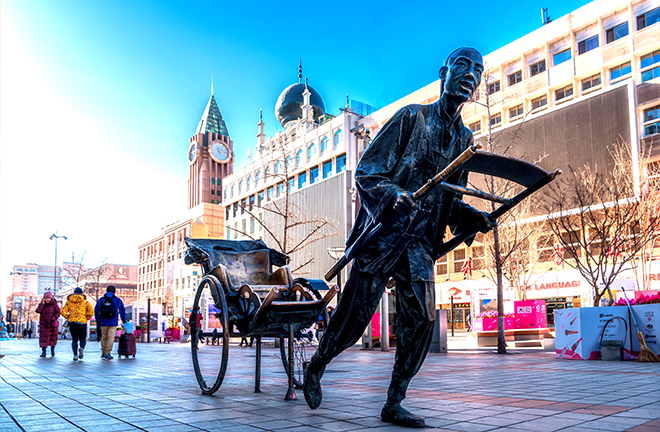History of Wangfujing

Modern Wangfujing Street Photo: TUCHONG
Wangfujing Street, stretching 1,818 meters from south to north, has witnessed the historical evolution of Beijing and the significant transformations in the lives of Beijingers. With origins tracing back centuries, Wangfujing has a rich history.
In 1338, the street, then known as “Dingzi Street,” was home to the supreme organ of military and political authority of the Yuan Dynasty. In 1420, the Yongle Emperor of Ming ordered the relocation of the national capital from Nanjing to present-day Beijing and built ten mansions in this area for his brothers, which led to the street being known as “Ten-Wangfu Street” [Wangfu refers to prince’s residence] during the Ming Dynasty. Later, during the Qing Dynasty, eight more royal residences were added, the largest of which was the residence of Dodo, also known as Prince Yu, the 15th son of Emperor Taizuz of Qing. Part of his residential site is now occupied by the Peking Union Medical College Hospital. Due to Dodo’s esteemed position and military achievements, the street was commonly referred to as “Wangfu Street” during the Qing Dynasty.
In 1905, Beijing undertook a major renaming of its streets. Accordingly, the street was renamed “Wangfujing” due to a well at its southern end. The new name, “Wangfujing” is a portmanteau combining “Wangfu” (royal palaces) with “Jing” (well). According to records from 1885, Beijing possessed a total of 1,258 wells within and outside the city walls, most of which contained bitter water. Sweet water wells, such as the well on Wangfujing, were rare, earning fame for the street. Today, visitors can still find a manhole cover protected by iron chains on Wangfujing Street, commemorating the origin of its name.
The prosperity of Wangfujing was substantially driven by the old Dong’an Market. This area was once given to General Wu Sangui as his residence. Following Wu’s failed rebellion in 1681, his residence was converted into a training ground for the military camp. In 1903, with the approval of Empress Dowager Cixi, the long-abandoned camp grounds were opened to merchants, disrupting the tranquility of the old city. Due to the concentration of customers and its convenient location, foreign merchants also set up shops on this street, and Wangfujing quickly became a bustling commercial district.
Edited by REN GUANHONG

 PRINT
PRINT CLOSE
CLOSE